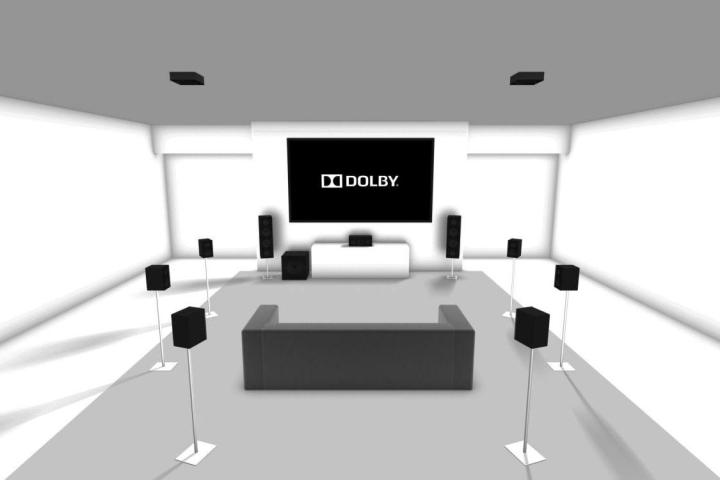
Today’s news comes on the heels of the recent announcements of several Dolby Atmos-ready receivers from some of top names in the industry, including Pioneer, Onkyo, Marantz, Integra, Denon, and Yamaha, with several more on the way. Existing Blu-ray players will be able to translate the Dolby Atmos mixes, but users will need to purchase one of the new receivers, and add special Atmos speakers, or in some cases convert current speakers, to take advantage of the new format.
Related: Dolby Atmos for home theaters: Everything you need to know
As one might imagine, Atmos for the home will not be the same experience movie enthusiasts have been treated to in theaters. The professional format is designed around theater configurations able to process up to 128 channels of sound, routed to as many as 64 speakers. That allows audio engineers and sound mixers to place audio effects from objects on the screen in extremely discrete positions, including along the ceiling for what is sometimes called the “voice of god” effect.
Home theaters equipped with Dolby Atmos will not be nearly as complex — but then again, most of us don’t have room for 64 speakers, no matter how much we want to knock out Grandma’s spare bedroom and turn the entire basement into an audio/visual playhouse. The home theater systems that have been released so far include configurations for 7, 9, and 11 channel systems, along with the all-important “.1” low frequency channel.
But what makes the Atmos setups more intriguing than current multi-channel home theater configurations are the aforementioned ceiling speaker channels, which are designed to take advantage of the more complex audio mixes to emit sound from above. Adding the new channels to users’ existing stable of surround sound speakers, Atmos systems are poised to create a more spherical, and theoretically much more realistic surround sound experience. Users can hear effects like rain, aircraft fly-bys, or explosions in space as if they are directly above them.
The extra speakers can be mounted on the ceiling, or for those less inclined to delve into some minor carpentry, the can also be placed on stands or atop tower speakers to shoot sound off the ceiling, and reflect it back to your ears. Manufacturers of speakers specifically designed for the Atmos format include Atlantic Technology, Definitive Technology, KEF, Onkyo, Pioneer USA, Teufel, and Triad Speakers.
Users still curious about the new home theater technology who want to hear it first hand will be able to check out live demonstrations in select stores including hhgregg, Future Shop, Crutchfield, Bjorns, and Best Buy Canada this fall.
Editors' Recommendations
- You Asked: HDMI 2.1 and Blu-ray, TV life spans, and 2023 TV price drops
- Samsung launches its flagship Dolby Atmos soundbar with discounted prices
- Amazon Prime Video makes Dolby Vision, Atmos a paid upgrade
- TCL goes all-in on Dolby Atmos with its first 7.1.4-channel soundbar
- Samsung’s new Dolby Atmos wireless speaker doubles as a picture frame


